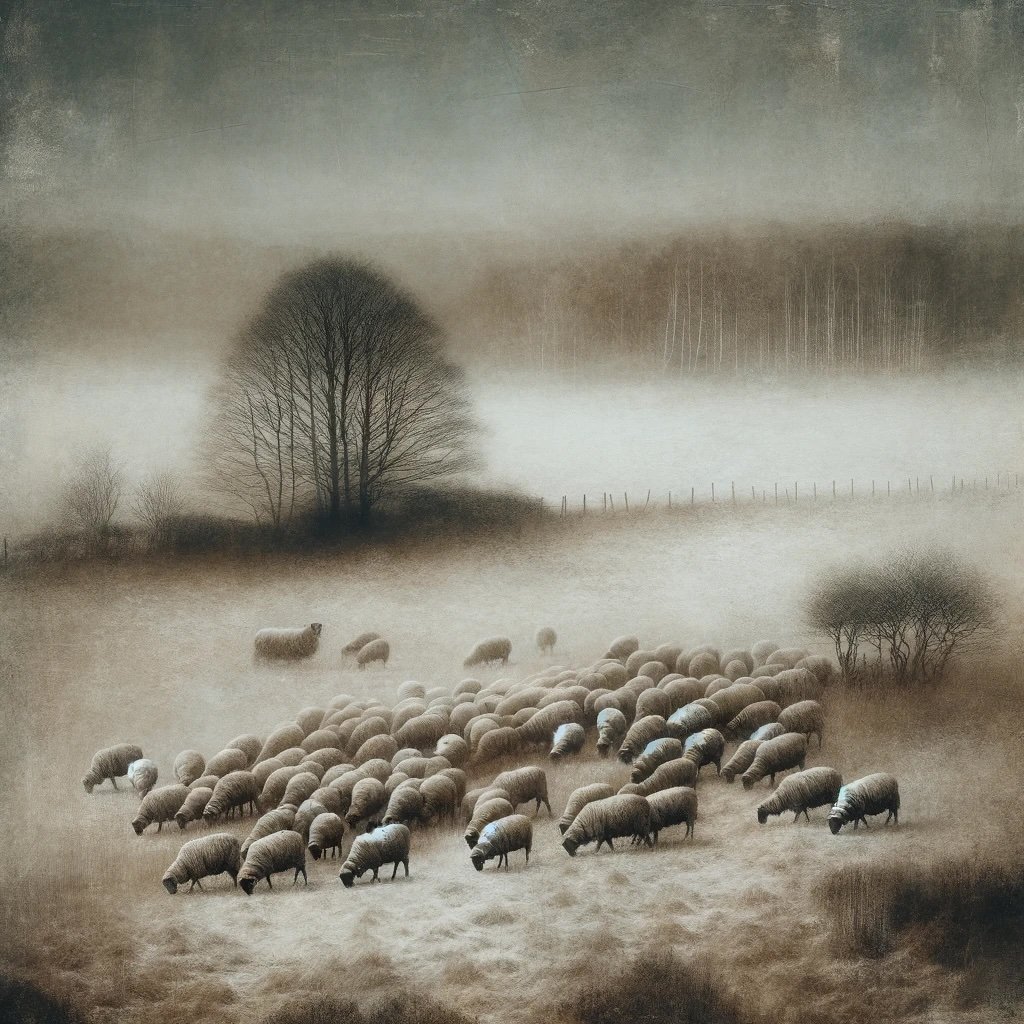By Cheryl Williams-Cosner
The fall of 2023 had unusually favorable grazing for our area. But in January, like most of the rest of the US, we had 0 F or lower temperatures for over a week.
Until this arctic blast, most of our alfalfa aftermath was still relatively green. But once the cold hit, our pasture turned an unappetizing shade of tan and crunched under our feet as we walked across the field.
But looks can be deceiving.
We considered bringing the sheep flock back to the base ranch and feeding alfalfa haylage but decided to get some data before making that call. Leaving this graze would have meant three days of set up and hauling and the added expense of haylage.
Based on the appearance of the alfalfa post-freezing, I assumed we would find the nutrient content acceptable, but I was particularly concerned about the TDN (energy) level for our pregnant ewes.
We pulled an alfalfa sample and sent it off to the feed testing lab.
The results? A forage test of our winter-worn alfalfa aftermath was impressive. This sample tested at 27% crude protein, 67% total digestible nutrients and a relative feed value of 167 on a dry matter basis.
For context, let's look at what a ewe's feed requirements are at late stage pregnancy.
"As an example, a 154-pound ewe will eat about 4.5 pounds of feed per day of a late gestation diet. For a 130%–180% lamb crop, she would need a diet with 65% total digestible nutrients and 11.3% crude protein." https://extension.oregonstate.edu/animals-livestock/sheep-goats/nutrition-lambing
This feed test quickly told me that we had no reason to stop grazing for fear of inadequate feed quality.
Twenty percent of our flock is growing, pregnant ewe lambs that will have lambs as yearlings. Their nutritional requirements are higher than mature ewes since their bodies are developing. And since they are pregnant, they need additional energy and protein to grow baby lambs. This class of sheep was top of mind when deciding the best way to manage the flock.
Had we skipped testing this field, we would have overlooked a very good feed source for an additional two weeks of grazing. This $40 forage test saved us over $1,800 in hay costs.
We have been winter grazing since 2008, and in that time, we have forage tested many fields to determine if the feed is providing adequate nutrition for our ewes.
Factors such as plant species, soil health, and even weather conditions can affect the color of forage without necessarily impacting its nutrient content. Forage that appears bleached and brown readily possesses the nutritional profile that sheep require.
Vitamin A is likely lacking in winter graze since the forage is no longer green. However, the ruminant liver can store vitamin A for three to six months, providing daily doses of the vitamin if sheep are grazing deficient or have subpar pastures.
The protein level in this alfalfa field is very high and will require ewes to use additional energy to excrete the excess urea. Very high crude protein is not always a good thing. Without adequate energy, sheep performance may be compromised. (Another newsletter article for another day.)
As graziers, it is easy to look at green fields as "good" feed and at yellow or brown fields as "poor" feed. But feed color does not always reflect feed value.
Knowing the nutritional levels of your feed is key to maintaining the health of your flock or herd and can ultimately save money on the feed bill.
Cheryl Williams-Cosner, in partnership with her husband Robert Cosner, raise cattle and sheep near Weston, Oregon and in Walla Walla, Washington. She also operates the Sheep School, and educational enterprise that provides graziers with tools and information they need to build a thriving, profitable flock through understandable, research-based information. This knowledge is delivered through articles, videos and courses on nutrition, grazing management and sheep health.

